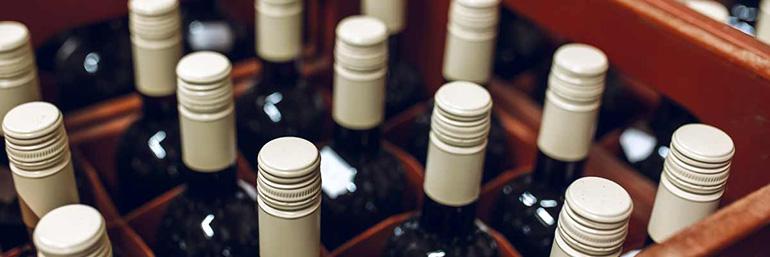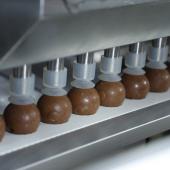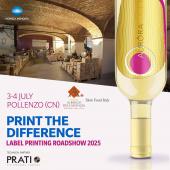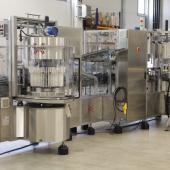Labelling: warning to wine producers
The imminent coming into force of Regulation (EU) 2021/2117 imposes new rules on the labelling of bottles of wine, which has to also show information about the ingredients, ideally through a unique or specific QR code for single lots. The solution proposed by Markem is the CoLOS® packing intelligence software
A major change for all EU wine producers and those supplying the market will mean that, from 8 December this year, wines will, for the first time, require extensive late-stage ingredient information included on their labels, Until now, due to its ability to alter in composition, wine has been exempted from strict ingredient labelling requirements, with the obligation only to display allergens and energy value. Under the new Regulation (EU) 2021/2117, all wines and aromatized wines produced or sold in the European Union, including those with reduced alcohol, will also need to supply full ingredients and nutritional information on the product - a major challenge given the unique properties of wine.
Following production and during its subsequent bottling and storage, the exact composition of wine can change, making a universal or one-size-fits-all approach to the labelling of wine bottles challenging at the very least, or even inaccurate.

The limits of preprinted labels are overcome with the QR code
This change implies extensive changes to wine labels, requiring far more information than at present, with all the implications for marketing implied, and, even more challenging, the measurement of the exact composition of wine at, or following, bottling. This means that information captured on pre-printed labels well before bottling could easily end up being wrong. Sugar, acidifiers or stabilizers may be added right before bottling, according to order or product characteristics, altering the ingredient composition which would have been recorded on a pre-printed label. The chances of altered composition are even higher when it comes to storage, especially wines conserved over years like vintage wines, giving rise to incorrect labeling which could impact the pocket and reputation of a brand.
The solution to recording the most up-to-date ingredient information lies with the introduction of unique 2D codes, especially the QR, of a dynamic nature, which are printed at, or as close to, the production line as possible. These codes must either be unique for each bottle of product, like a serial number, allowing for the greatest level of traceability, or at least be applicable solely to each batch which has the same composition of ingredients.
Traceability on-the-fly
Beginning soon, each winemaker or labeler will require a space on the production line reserved for marking the QR code on the label which must be of extremely high print quality to allow easy scanning by Smartphones, although it will ideally only occupy a tiny area on the product, in order to preserve brand identity. Laser and thermal transfer overprinting (TTO) technology are the most suitable marking technologies which, when combined with dedicated software able to generate dynamic QR codes and cameras to verify their legibility, guarantee compliance with the new so-called Wine Regulation.
The Markem-Imaje CoLOS® packaging intelligence software is ideal for generating unique or batch-specific QR codes, the latter being sufficient to comply with the new EU regulation. The technology easily integrates with both laser and TTO printers onto production lines to print very high-quality labels and is used by multiple brands.
CoLOS® software links the production line to a brand’s ERP, automatically retrieving information from serialization data to the all-important latest ingredient composition, making it available via a unique and dynamic QR code to achieve the highest level of traceability. Upon printing, CoLOS® software assures the quality and legibility of the QR code by using highly powerful cameras.
Marking for the future
This new EU regulation also assists in the gradual shift to the newly launched GS1 Digital Link that will, in time, become the new standard for global product codification, eventually replacing the traditional 1D barcode and satisfying the regulatory and consumer demand for greater product traceability. QR codes printed at the production line will comply with Digital Link requirements for both consumers and retailers: the former can access dedicated non-marketing-based data using their Smartphone, while different functionality within the QR can be exclusively accessed at the point of sale for pricing, including updated details, or across the supply chain for traceability purposes. For further information please contact [email protected]
QR code caveat
The QR and other dynamic 2D codes are the solution to this requirement for full ingredient and nutritional information on the product post-production because the amount of information is considerable and could crowd and spoil brands’ label designs.
However, under the new regulation, the following information must now be present on the label of the bottle itself in addition to the ingredient information which could be available via a dynamic 2D barcode or QR code:
- category and source of wine;
- name of bottler, producer and vendor, or importer in the case of wines produced outside of the EU;
- lot number and quantity of product;
- list of intolerances and allergens;
- alcoholic strength (%);
- sugar content (for sparkling wines only);
- expiration date for de-alcoholized wines (10% alcohol content or less)
Importantly, the ingredient information which must be in an EU language and which we suggest could be accessed by a 2D code like a QR, must not be displayed alongside any form of sales or marketing material. This is a violation of the regulation which thus requires winemakers to set up separate microsites to provide this ingredient information.
Using a link from an existing wine’s website risks falling foul of the law because of the associated tracking software used to track customer data which, by EU law, cannot be retrieved. Any failure to provide this detailed new information will incur fines and removal of the product from the market. Any wine already produced before 8 December this year is not subject to the new ingredient information demands, whenever it is sold.





















